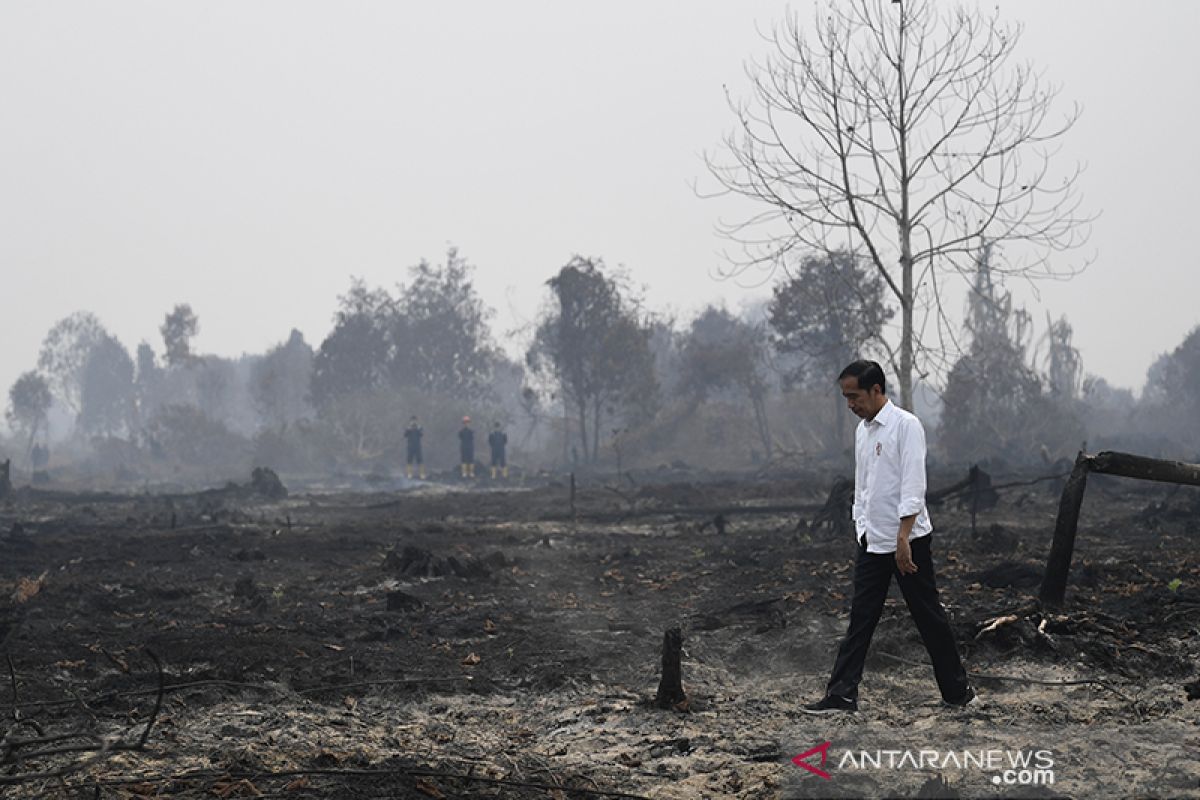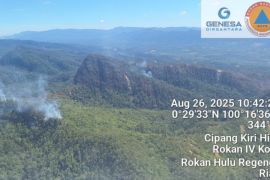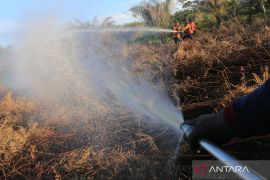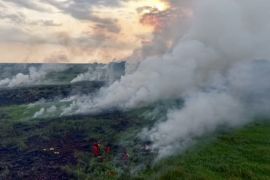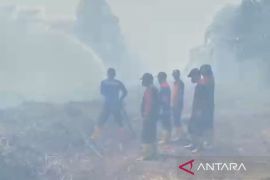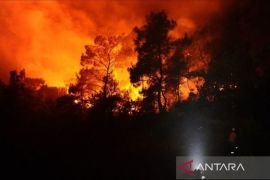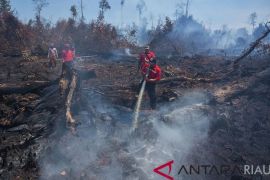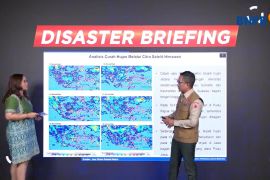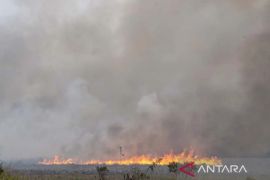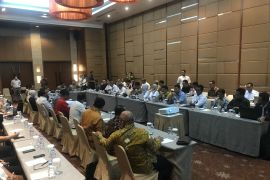Wildfires are normally known to occur every year on Sumatra and Kalimantan islands during the dry season. They often produce smog that can shroud neighboring countries, particularly Malaysia and Singapore.
This year, the peak dry season is forecast for August and September.
During a limited cabinet meeting chaired by President Joko Widodo (Jokowi) in Jakarta on June 23, 2020, Doni Monardo, chief of the Task Force for the Acceleration of COVID-19 Response, cautioned that heavy smoke from forest and land fires, especially peatlands, could adversely impact public health and increase risk of people contracting the coronavirus disease (COVID-19).
"Heavy smoke can pose a health threat to the community, particularly those ailing from asthma or ARI (acute respiratory infection). The impact could be dangerous for asthma patients when exposed to COVID-19," Monardo said.
Hence, Jokowi has ordered his ministers to take precautionary steps against forest and land fires, Monardo added.
He stressed the need for closer cooperation between all sections of the community in all regions to mitigate forest and land fires, particularly in fire-prone areas.
"There is a pressing need for hard work and cooperation from all sections of the community in all regions that annually experience significant forest and land fires, especially in the peatland areas," he stated.
"We (have to) avoid the smoke, so that we can also safeguard ourselves from the dangers of the COVID-19 pandemic," he noted.
While opening the limited meeting on anticipation of forest and land fires, Jokowi reiterated that large sections of Indonesia would experience a dry season in August, 2020.
The head of state elaborated that nearly 17 percent of Indonesia's territory experienced drought in April, 2020, while 38 percent of other regions reeled under it in May, 2020, and 27 percent of other regions in June 2020.
"Drought will occur in most regions in August. We still have a short preparation period of a month from now on," the President remarked.
As the nation grapples with the COVID-19 pandemic, Indonesia also has a major task of taking precautionary measures against land and forest fires, he said.
Jokowi also highlighted the need to use technology to prevent land and forest fires, while monitoring fire-prone areas.
"Management on the field must be coordinated properly. Apply technology to monitor fire-prone areas and to update information," he remarked.
The President also called for efforts to arrange the management of peat ecosystems in a consistent manner.
Peatland structuring is conducted by maintaining groundwater levels and constructing canal blocks, ponds, and drilling wells.
"We have already applied other wetting technologies, but it must be consistently done," the President stated.
Meanwhile, during the meeting, Minister of Environmental Affairs and Forestry, Siti Nurbaya Bakar said the Indonesian government is anticipating a potential explosion in forest fires, particularly in northern Sumatra, Riau, Aceh, and parts of North Sumatra, as well as Kalimantan.
In fact, the government carried out weather modification to produce rains in several places, such as Riau and other parts of Sumatra, in April and May, to control smoke from wildfires.
There are plans to carry out weather modification again in Kalimantan, she stated. Based on weather analysis, hotspots in Kalimantan will be strong with the onset of the dry season in July. The hotspots will peak in late August to early September.
“Hopefully, this (weather modification) can be a solution. Rather than continuing to extinguish it (forest fire), with this, we can systematically prepare for it," she said.
In addition to weather modification, the government has also intensified monitoring and control by involving the police and the military to prevent forest fires.
In the meantime, Coordinating Minister for Political, Legal and Security Affairs, Mahfud MD, has claimed that Indonesia has successfully minimized forest fires, with no massive fires reported in the country over the past few years.
"In the meeting, we have discussed the situation in 2020, as we are not only dealing with land and forest fires, but also COVID-19. Hence, we have prepared joint measures to anticipate the oncoming dry season," the minister informed.
Efforts to prevent and mitigate forest fires would need firm law enforcement. Hence, some legal measures have been prepared in anticipation of forest fires this year.
In 2019, six out of eight provinces prone to forest fires declared an emergency as flames flared in their forest areas.
Last year, wildfires scorched nearly 16,000 sq. km of land, mostly on the islands of Sumatra and Kalimantan. In comparison, fires laid to waste 26,000 sq. km of land in 2015, resulting in one of the worst haze episodes in the country’s history.
During the January-July 2019 period, the Indonesian Environmental Affairs and Forestry Ministry recorded a total of 2,070 hotspots, with confidence rate at over 80 percent.
Meanwhile, through legal enforcement and firm control, the Indonesian government had managed to reduce forest fires across the country by 96.5 percent during the 2015-2017 period.
As per data obtained from NOAA's satellites, 21,929 hotspots were found across Indonesia in 2015, and the figure dropped to 3,915 in 2016, and to 2,257 in 2017.
Wild fires razed a total of 2,611,411 hectares in 2015, and the figure fell to 438,360 hectares in 2016, and dipped further to 165,464 hectares in 2017.
Related news: Exposure to forest, land fire smoke worsens COVID-19 risk: Monardo
Related news: Indonesia successful in minimizing forest fires, claims minister
Related news: Riau calls for private companies to help fight wildfires
Editor: Rahmad Nasution
Copyright © ANTARA 2020
